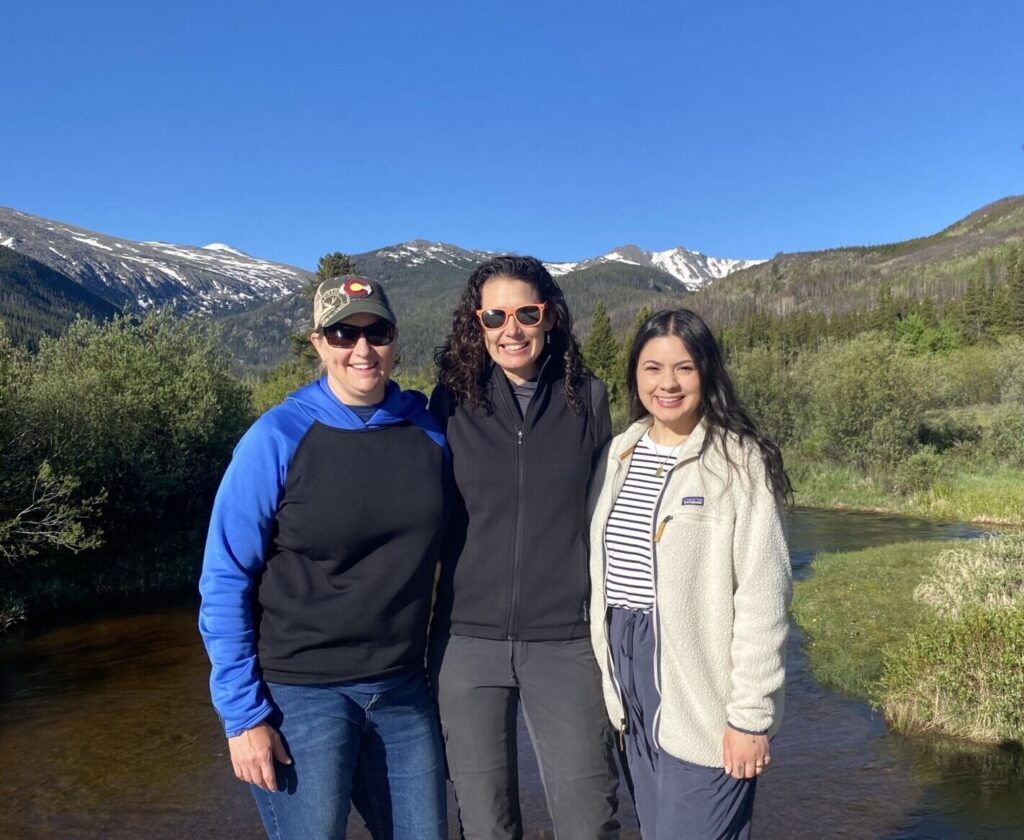
More than the mountain location made the Forestry Field Measurements class held at the Colorado State University Mountain Campus special this summer — it was the first time the CSU course was taught by a group of women.
As an early career woman and person of color in forestry, instructor Katarina Warnick commented on how a women-led instructor team felt hopeful for the still male-dominated field.
“There was a time when I didn’t feel like I belonged in forestry — I was too different, I didn’t feel like I had much in common with my peers. It was isolating,” Warnick said. “I don’t want anyone — especially students in underrepresented groups — to feel that way. It’s so important to remember that this field is for everyone.”
When Jamie Dahl had the opportunity to be the lead instructor for Forestry Field Measurements at the Mountain Campus, she couldn’t pass it up.
Dahl, a faculty member in the Department of Human Dimensions of Natural Resources in the Warner College of Natural Resources, helped teach the class years ago and was ready to teach forestry skills again in a secluded mountain valley 53 miles west of Fort Collins, Colorado.
Dahl enlisted the help of Warnick, a master’s student in forest sciences in the Department of Forest and Rangeland Stewardship, and instructor Heather Dannahower from Front Range Community College. The three are all CSU alumnae.
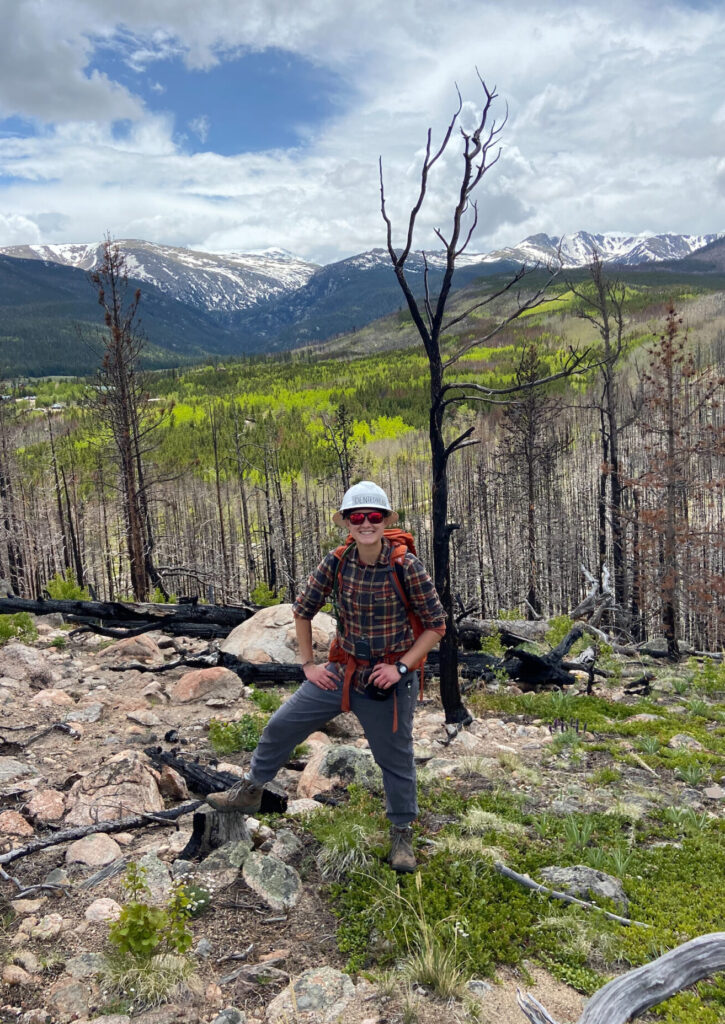
The group led undergraduate students studying forestry in the intensive two-week field course. Students learn hands-on the technical skills they need such as navigating the land, tree measurements, plot measurements, fuel measurements, and gathering regeneration data.
“You can see us lighting the forestry spark. You can see it starting to glow inside the students in this class,” Dahl said.
Emma Kucera, a junior studying forest fire science in forest and rangeland stewardship, says the instructors proved to be role models representing and encouraging diversity in leadership and the natural resources field.
“Being a part of the LGBTQ+ community, we need more people,” Kucera said. “We need people from every community to have a seat at that table, to have a voice to be that role model or show that diversity. You can do this. You can be a strong person and do forestry, do research, or be a logger – you can make a difference.”
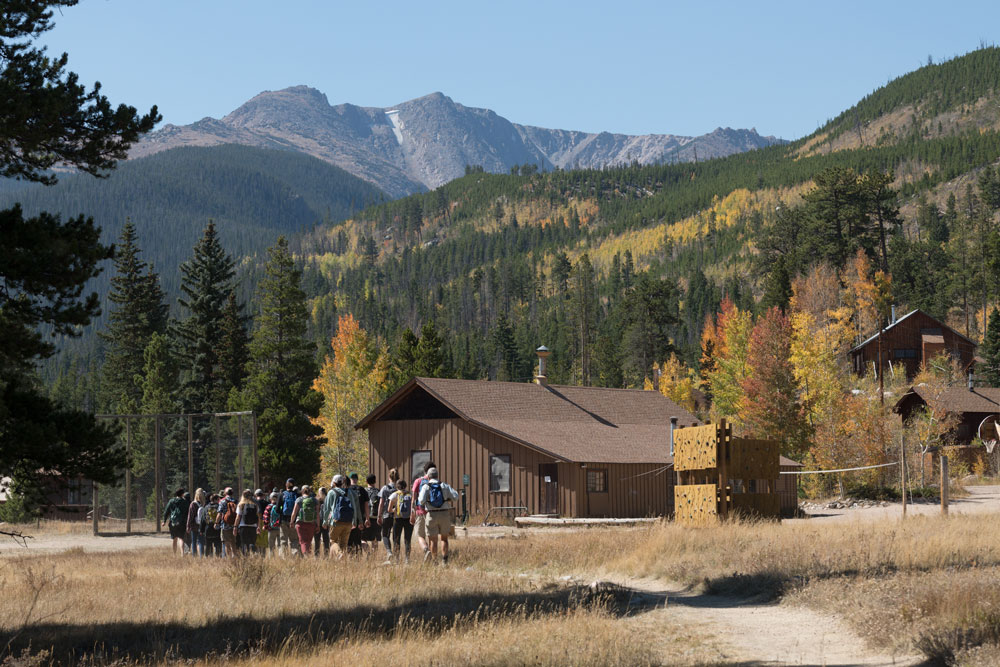
Preparing students for their future
For Kucera, the coursework in the field was essential. It has already been put to use over the summer in their internship doing data collection for the Colorado Forest Restoration Institute at CSU. It also fueled ideas about going back to school in the future.
“I want to work for a little while, but I’m also very tempted to come back and do my own research or learn more because what I’ve learned is so interesting. I want to figure out a way that I could help with fire mitigation and management,” Kucera said.
The students work in three different forest types in and around the mountain campus: mixed conifer, ponderosa pine, and spruce-fir. They also get exposure to forest areas that burned in the High Park (2012) and Cameron Peak (2020) fires.
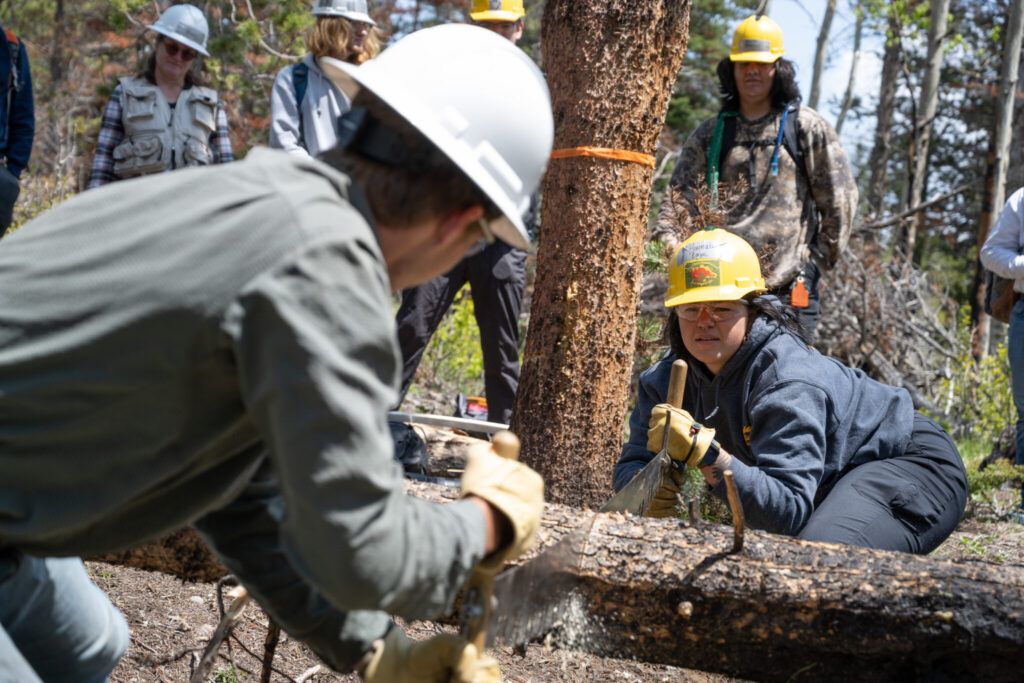
Hannah Zajac, a junior majoring in forest and rangeland stewardship and natural resources management, said that as a student who transferred from a different major, the course built up her resume so that she feels confident about finding a job doing fieldwork.
She’s among many students who say the experiential class affirmed their decision to study forestry at CSU. One factor in the success of the class is community-building with both instructors and peers. During the course, students stay at Mountain Campus in a dorm, sharing meals, downtime, and making memories.
“Mountain campus was very special, especially with the limited Internet, so not everybody’s on their phone. You’re going out and you’re going on walks with all these people that you may not have talked to or had class with yet,” Zajac said.
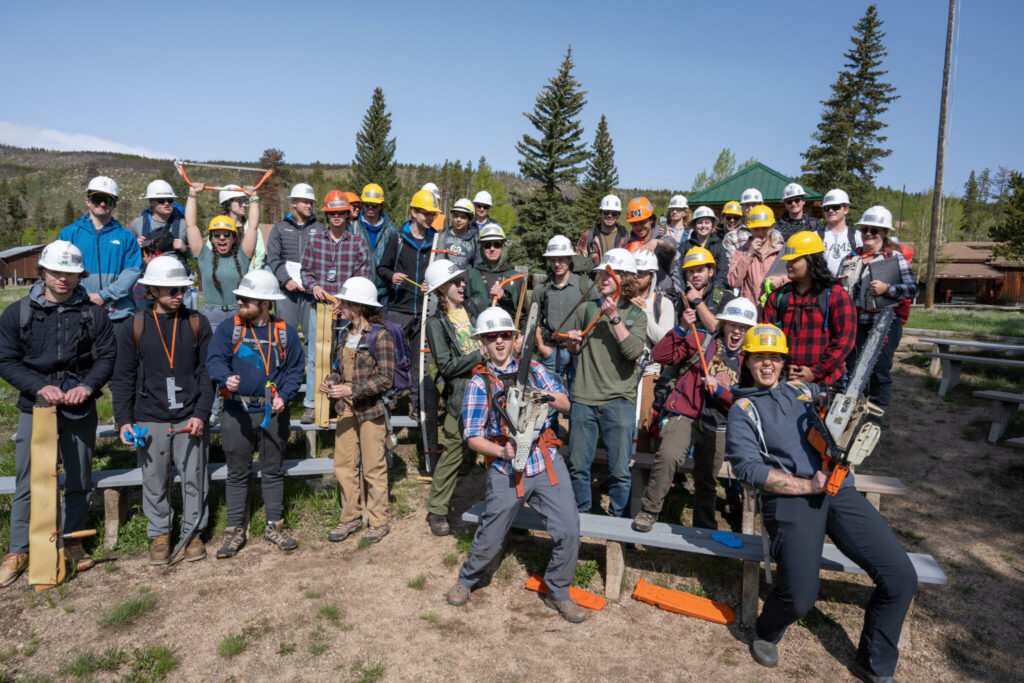
An opportunity on Juneteenth
Dahl said that she makes it a point to weave conversations around social and environmental justice and equity into her classes, including a course on the interface of social science and communications in conservation. She studied the experiences of women and other minoritized groups working in natural resource fields for her Ph.D. dissertation.
Class was scheduled on Juneteenth (June 19), and Dahl knew there was a lot of coursework to cover in the short two weeks. She encouraged students to participate in class that day, which they did.
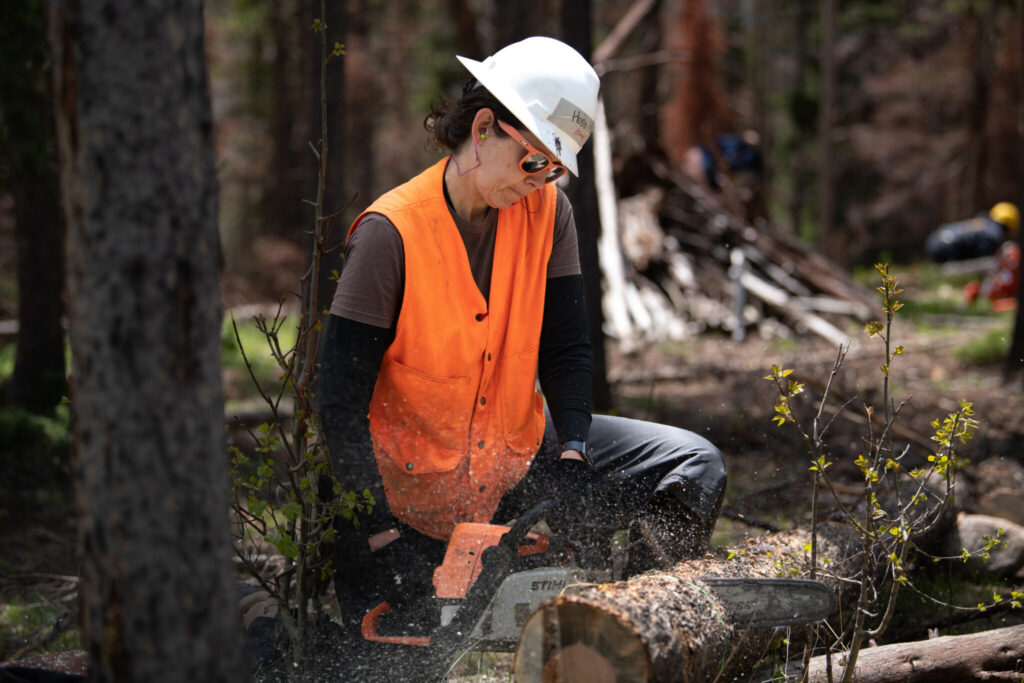
Dahl incorporated a lesson inviting conversation about the history of Juneteenth and the history of oppression in minoritized groups and why it matters for the course and natural resource fields at large.
Reflecting on the lesson, Zajac said, “Social justice is important. To get to hear from people from other communities firsthand was enlightening to me. As somebody who is privileged, I don’t necessarily think about it all the time.”
The groups discussed their positions and experiences and that of several minoritized identities, including Indigenous groups, who have historically contributed their knowledge to managing land and ecosystems responsibly.
“We need Indigenous communities to have a bigger say in what we do because we are already seeing the side effects from not using their management techniques,” Kucera said, referring to the history of land management in the United States since European colonization.
Representation in forestry
According to research, the entry and advancement of minoritized groups in natural resources professions, such as women and people of color, are consistently and historically acknowledged as lagging behind other disciplines.
As of 2022, women represented less than 20% of forest sector professionals in the U.S. (Women’s Forest Congress, 2022), which has made it harder for many to have structural support to thrive in their careers or to feel included, respected, and safe.
Women with other minoritized identities, such as being Black or LGBTQIA2S+, reflect an even smaller percentage of natural resources professionals.
“It’s not necessarily purposeful, but I do think there are systems in place that have made it more difficult for certain people to enter and thrive in these professions,” Dahl said.
Much has changed since the first forestry field camp was offered at the campus in 1917, shortly after Congress designated the mountain area for Colorado State University to use for educational programming.
“It was fun to look at all the historic photos in the dining hall and reflect on the fact that natural resource professionals have been trained there for 100 years,” Dannahower said. “However, the dynamics have changed. Those old photographs show only men getting trained. The classes today have changed to become broader and more inclusive. These groups will have their own contributions to how we move forward in forestry, which is critical to solving tomorrow’s challenges.”
Reflecting on the all-female leadership team, she said, “We’re not only part of forestry; we’re also training the next generation in forestry.”
Forestry Field Measurements (F230) is required for forest and rangeland stewardship majors who have concentrations in forest management, forest fire science, forest biology, and rangeland and forest management. Learn more here.
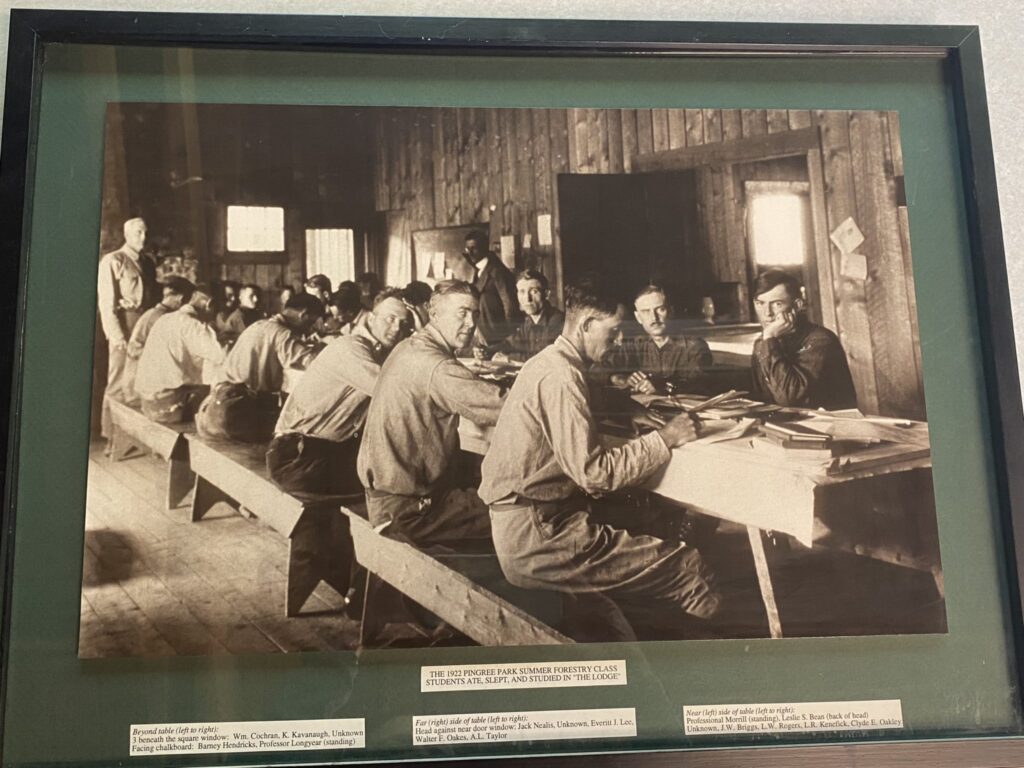
See the course in action with this video highlight from 2022: